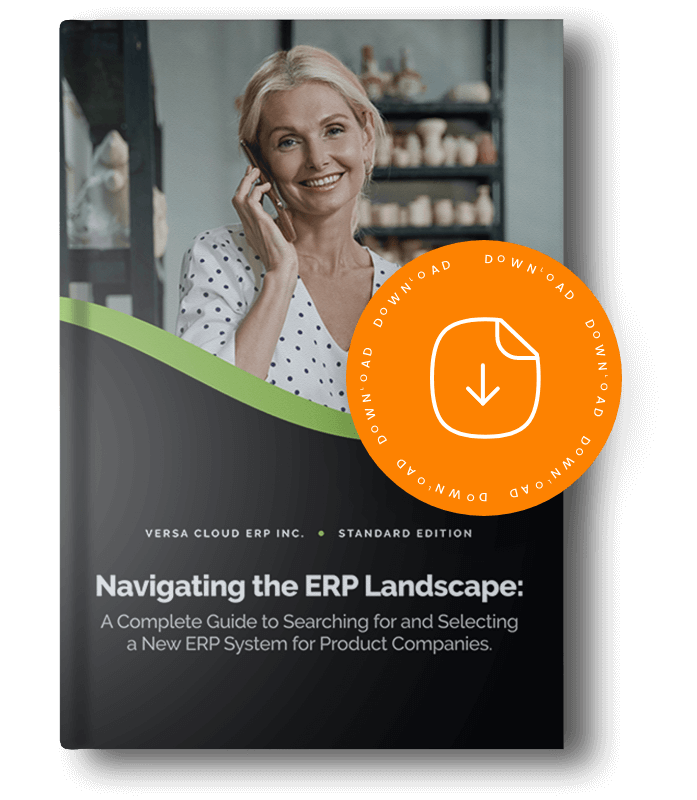In the rapidly shifting digital sphere, the pressure on businesses to operate more quickly, more efficiently, and with better data is increasing, and legacy systems are actively working against those goals. This is where the combined force of Enterprise Resource Planning (ERP) and Artificial Intelligence (AI) continues to disrupt the business landscape.
AI is no longer a far-off thought—you can begin to implement it now to change the way AI-driven ERP systems operate for businesses everywhere. From automating or augmenting everyday activities to using predictive analytics to accurately forecast which way a market trend could head, AI-infused ERPs are providing new competitive advantages for businesses.
Let’s take a look at how AI is affecting the transition to smarter ERP platforms that are designed to be more agile and developed to produce actionable business value.
What Is AI-Driven ERP System?
AI-driven ERP systems means using AI technology – machine learning, NLP, and predictive analytics, within ERP systems. Unlike traditional ERPs, which require manual data input and rules-based processing, AI-driven ERPs learn from manufacturing history, user input behavior, and external variables to make better decisions and automate transactional routines.
This evolution is not replacing team members with robots. It is about giving teams better tools to better work efficiently, understand outcomes and reaction abilities to changing environments.
How AI Makes ERP Smarter
ERP systems are fundamentally data-centric. But raw data isn’t enough. It’s what you do with it that counts. AI steps in to provide:
1. Intelligent Automation: Tasks that once were dependent on human oversight — invoice processing, inventory reorder points, or lead scoring — can now be executed by AI-driven ERP systems which minimized human error, allowed staff to spent time on more productive things, and created higher levels of operational efficiency.
Example: Instead of simply establishing a reorder point for a particular inventory item, AI analyzes past usage, lead time, seasonality, supplier reliability and dynamically establishes a reorder point.
2. Predictive Insights: With machine learning, ERPs can spot trends and patterns you might not catch manually. Whether it’s identifying which product lines are likely to spike next quarter or detecting early warning signs of supplier risk, AI offers insights that help you stay ahead.
3. Natural Language Interfaces: With AI-enabled voice commands and chatbots, teams have an easier way to communicate with ERP systems. Instead of drilling down through multiple click menus, employees can ask questions such as “Which were our top five performing regions last month?” and get instant answers.
4. Continuous Learning: AI continues to get better. Each time it interacts with accept and deny data, it learns and adapts to calibrate its recommendations and improve system accuracy.
Faster Decisions with Real-Time Intelligence
In the past, decision-making meant waiting for reports to be compiled, analyzed, and distributed. That delay could cost businesses opportunities—or worse, lead to costly mistakes.
AI-integrated ERP changes that dynamic.
Here’s how it accelerates decisions:
- Dashboards allow for real-time insights to visualize changes in KPIs the moment they take shape.
- Automated alerts notify a user of any anomalies or performance issues.
- Scenario modelling, powered by artificial intelligence, makes it possible to model possible outcomes in minutes before making major moves.
If sales suddenly drop in a region, the system can immediately aggregate data–such as availability of inventory, marketing spend, or competitor activities–to help the leaders mitigate the effects of that dropped sale.
Agile Supply Chains Through Predictive Planning
Supply chains have always been complicated, but the last few years—marked by disruptions caused by global events, shipping slowdowns, and shortages of raw materials—have amplified the need for agility.
AI-driven ERP systems transforms supply chains from reactive to proactive:
1. Demand Forecasting: Artificial Intelligence is able to interpret historical sales, seasonal inclinations, market indicators, and even the weather to develop a more precise measure of demand, which results in improved purchasing and a greater ability to control your inventory.
2. Risk Management: By monitoring supplier reliability, geopolitical factors, and market dynamics, AI helps identify potential risks before they become bottlenecks.
3. Dynamic Route Optimization: AI articulation exists within logistics modules as well. Using real–time data AI can advise alternative transport routes or carriers that result in delivery delays or transportation costs being reduced.
4. Capacity Planning: AI helps align production schedules with actual demand, avoiding overproduction or stockouts. It balances manufacturing capabilities with inventory goals and customer expectations.
In short, AI doesn’t just improve visibility; it provides the foresight and flexibility supply chains need to thrive.
Where AI in ERP Brings the Most Value
Wondering where AI actually makes a difference in ERP? Let’s break it down.
-
Finance: Tired of manual reconciliations and scanning spreadsheets for errors? AI handles those repetitive tasks and flags anything unusual—so you catch issues early and gain better cash control.
-
Sales & Marketing: AI spots patterns in customer behavior, scores leads more accurately, and even helps tailor campaigns to hit the right audience at the right time. Smarter targeting, better results.
-
Inventory & Procurement: Instead of guessing how much stock to order, AI looks at demand trends, supplier timelines, and real-time data to help you maintain the perfect balance—no more overstocking or last-minute panic orders.
- Manufacturing: Downtime costs. AI forecasts when maintenance is needed before something breaks, while also optimizing your schedules based on demand to keep your operation moving along.
- Customer Service: AI-powered chatbots automate the FAQs and routine issues, so your team can continue working on the complex issues.
-
Bonus: sentiment analysis tools help you read the tone behind the text, so you respond smarter, not just faster.
Bottom line? AI is there to take the guesswork out of your daily operations and give every department a boost in efficiency and clarity.
Why Businesses Are Embracing AI-ERP Systems Now
The adoption of AI in ERP is no longer limited to tech giants or Fortune 500 companies. Growing accessibility, cloud-based deployment, and user-friendly interfaces mean that businesses of all sizes can now benefit.
Key Drivers Behind the Shift:
- Data Explosion: Companies are generating more data than ever. AI helps extract value from it.
- Customer Expectations: The bar for speed, personalization, and service has been raised.
- Global Disruptions: Agile, AI-driven systems adapt better to change and uncertainty.
- Competitive Advantage: AI helps businesses operate leaner and smarter than the competition.
Companies that integrate AI early into their ERP ecosystem will find themselves better positioned to innovate and scale.
Future Outlook: What’s Next for AI in ERP?
AI and ERP will continue to evolve together, driven by innovation and market demand. Here are a few trends on the horizon:
- Hyper-automation: Entire workflows—from order to cash—will be automated end-to-end.
- AI + IoT Integration: Smart factories and connected devices will feed real-time data into ERPs for even deeper insights.
- Autonomous Decision-Making: Future ERPs may not just recommend actions—they’ll carry them out within defined parameters.
- AI Ethics & Compliance: As AI becomes more embedded in core operations, data governance and transparency will grow in importance.
What’s clear is that this isn’t a passing trend. It’s a fundamental shift in how ERP systems are built, used, and valued.
How to Get Started with AI in ERP
Do you want to explore AI in your ERP, but don’t know where to start? Start small.
Here are a few pragmatic steps to explore the possibilities:
Audit your existing ERP system: this can help you know where you are inefficient, not leveraging your data, or lacking insights.
Define high-impact use cases: identify areas where automation and/or improved forecasting can provide quick wins.
Foster great data quality: AI is only as good as the data it works with. You need clean, structured, and integrated data.
Choose a scalable platform: choose an ERP platform that provides a modular approach to adopting AI, so you can start small and scale as needed.
Train teams on how to embrace change: ultimately, you want users to have the courage to utilize and trust AI-enabled tools.
AI will not overwhelm you – it will be a series of small steps, each adding value along the way.
Conclusion
Artificial Intelligence is doing more than just improving ERP systems–it’s changing the game entirely. There is intelligent automation, predictive analytics, sustainable supply chain model flexibility, and real-time decision making with AI bringing new life to an antiquated selection of once rigid, ERP platforms.
Companies embracing the evolution will operationalize not only more operational efficiency, but more resiliency and growth potential. The correct question is no longer if AI should be included with ERP, it is how soon can we start to benefit from AI?
Take the First Step Towards Transformation
Effectively manage your financials, multiple channel inventory, and production workflows with our award-winning ERP.
Let Versa Cloud ERP do the heavy lifting for you.
Do Business on the Move!
Make your businesses hassle-free and cut the heavyweights sign up for the Versa Cloud ERP today!!
Join our Versa Community and be Future-ready with us.









